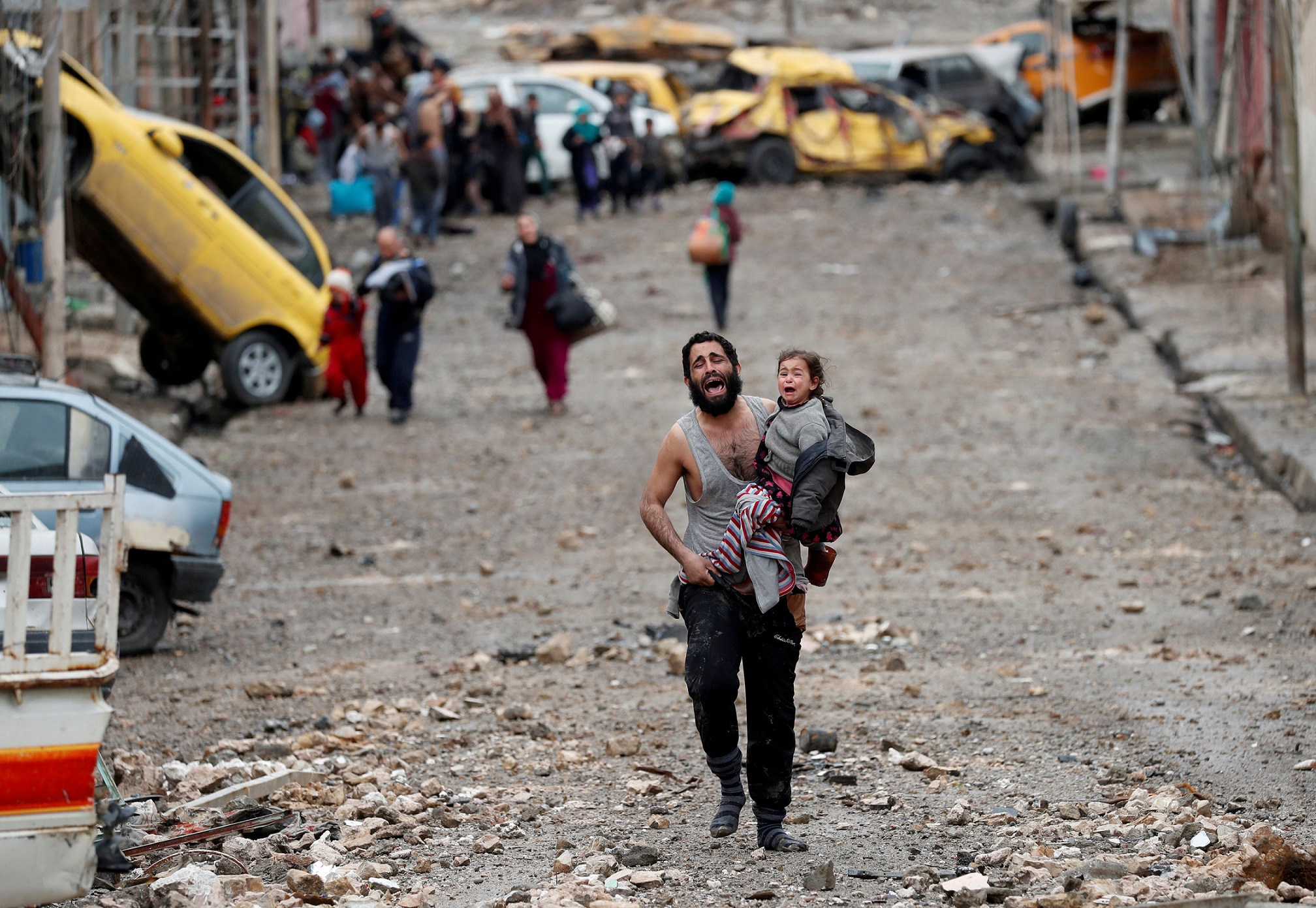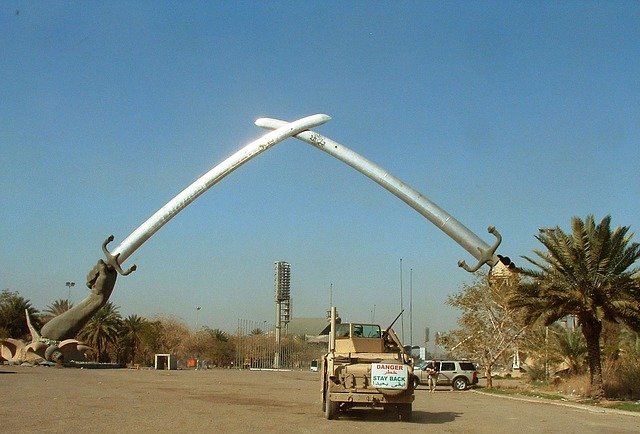
The gradual decline in the number of suicide bombings in 2018 and 2019 continued in 2020, with a 14.5 percent drop from the previous year. Most of the suicide bombings were concentrated in three countries: Afghanistan, Somalia, and Syria. There was also a steep drop in the number of victims. Salafi-jihadist organizations again accounted for a decisive majority of the world's suicide bombings, and were directly or indirectly responsible for 95 percent of all such attacks. Whether the decline in suicide bombings in recent years results from the diminishing returns from this activity, or from a combination of the circumstances of the organizations involved and improved counteraction capabilities on the part of the countries attacked will become clear in the following decade.
Suicide bombings tallied and analyzed by the Terrorism and Low Intensity Conflict Program at the Institute for National Security Studies (INSS) are based on at least two independent sources. Combined attacks on a number of proximate targets, or as part of a deliberate advance plan, are counted as a single assault.
Data gathered at INSS show that the downward trend in the number of suicide bombings worldwide in recent years continued in 2020: around 127 suicide bombings were carried out in 2020 by 177 perpetrators, compared with approximately 149 attacks in 2019 (a 14.5 percent drop) by around 236 perpetrators (a decline of about 25 percent). The number of victims also declined sharply: around 765 were killed in 2020, compared with around 1,855 in 2019, a 58.5 percent decrease, and some 1,925 people were injured in 2020, compared with some 3,663 in 2019, a 47.5 percent drop. The average number of people killed per suicide bombing in 2020 was 6, compared with 12 in the preceding year, and the average number of people injured was 15 per attack, compared with 25 in 2019.
In 2020, suicide bombings occurred in 17 countries, a decline from the 24 countries that were sites of such attacks in 2019. For the third consecutive year, Asia was the most frequent site of suicide bombings, where around 57 suicide bombings took place in 2020, 45 percent of the global total – this was 16 percent less than the some 68 attacks in the preceding year. Afghanistan had the highest number of suicide bombings in Asia with some 52 attacks, 21 percent more than the some 43 attacks in 2019. Approximately 38 of the suicide bombings in Afghanistan in 2020 were either directly attributable to the Taliban (according to an official announcement of responsibility by the organization), or indirectly attributable to it (based on assessments). Most of the Taliban attacks in 2020 occurred since September, following the beginning of talks between the Afghan government and the Taliban in the Taliban-US framework of understandings for the withdrawal of American forces. These talks led to a wave of suicide bombings aimed primarily at the Afghan government and security forces.

Suicide bombings by the Taliban accounted for some 57.5 percent of the 66 suicide bombings attributed to the al-Qaeda camp, which was 24.5 percent more than the some 53 suicide bombings carried out by this camp in 2019. Khorasan Province, the ISIS partner in Afghanistan, carried out around 6 suicide bombings in 2020, the same number as in the preceding year. In the 52 suicide bombings in Afghanistan in 2020, some 400 people were killed and 1,235 injured, an average of 8 people killed and 24 injured per attack. In 2019, some 43 suicide bombings were carried in Afghanistan, in which around 660 people were killed and 1,820 injured – an average of 15 people killed and 42 injured per attack. In addition, around 3 suicide bombings were carried out in 2020 in Pakistan, compared with approximately 10 in 2019. One suicide bombing was carried out in the Philippines in 2020 by the Abu Sayyaf group, identified as the ISIS partner in Southeast Asia, compared with 3 attacks in 2019. One suicide bombing was carried out in 2020 in Russia, by Islamist rebels.
Africa continues to be an active theater for suicide bombings with some 37 attacks in 2020, about 29 percent of the global total, mostly in Somalia in East Africa. Two organizations stand out in this picture: al-Shabaab in Somalia, allied with the al-Qaeda camp, and Boko Haram in Nigeria, which is a partner in the ISIS camp. In contrast to the general global decline in suicide bombings in 2020, the number of suicide bombings in Africa remained fairly stable and even increased, with around 12 percent more than the some 33 attacks committed in 2019. Al-Shabaab was responsible for around 24 suicide bombings in 2020, all in Somalia, compared with about 14 in the preceding year. Approximately 130 people were killed and 210 injured in these attacks, an average of around 5 people killed and 9 injured per attack. In the some 13 suicide bombings carried out in Somalia in 2019 (an additional attack was carried out in Kenya), around 210 people were killed and 380 injured, an average of about 16 people killed and 29 injured per attack. Boko Haram was responsible for around 10 suicide bombings in 2020, compared with about 8 in 2019: 5 in Cameroon, 4 in Nigeria, and one in Chad. Two suicide bombings were carried out by ISIS in Algeria, and one by Jama'a Nusrat ul-Islam wa al-Muslimin (Support Group for Islam and Muslims) in Mali. One person was killed in an attack in Algeria, and one was killed and two others were injured in the attack in Mali.

In the Middle East, which until three years ago was the most active theater for suicide bombings over 15 years – primarily as a result of the war in Iraq – the downward trend in suicide bombings continued in 2020. Around 33 suicide bombings took place in 2020, 26 percent of the global total and 29.5 percent lower than the some 47 suicide bombings of 2019. A majority of the Middle East suicide bombings in 2020 took place in Syria (around 19) and Iraq (around 8, the same number as in the preceding year) – all of them committed by ISIS. Additional suicide bombings took place in Egypt, Lebanon, Libya, and Turkey – one in each. ISIS remained the primary element responsible for suicide bombings in the Middle East with around 17 attacks attributed to it, some 50 percent less than the some 34 attacks of the preceding year. However, Hay'at Tahrir al-Sham was also prominent in 2020, with responsibility for some 10 suicide bombings, compared with 6 in 2019.
The Role of Salafi-Jihadist Organizations in Suicide Bombings around the World
Salafi-jihadist organizations continued to account for a decisive majority of the suicide bombings in the world in 2020, with direct or indirect responsibility for some 88 percent of all such attacks, or according to a more inclusive assessment – if attacks are included whose perpetrators are known with great likelihood, but not absolute certainty – some 95 percent of all such attacks. Only 4 suicide bombings in 2020 cannot be attributed with a high degree of certainty to a Salafi-jihadist organization. In contrast to 2019, when the Islamic State and its partners were the dominant element behind suicide bombings, the role of terrorist organizations affiliated with the al-Qaeda camp stood out in 2020.
Since it was founded in 2014, the Islamic State was the main element responsible for suicide bombings in the world, both by itself and through its affiliates, and ISIS, which succeeded the Islamic State after the latter's military defeat in 2019, continued its leading role. In 2020, however, the al-Qaeda camp led suicide bombings, with a majority of the attacks carried out by the Taliban – the organization that has sponsored and hosted al-Qaeda in Afghanistan for many years. This alliance was directly or indirectly responsible for some 66 suicide bombings, about 52 percent of the total in 2020. The Taliban accounted for some 38 of these: for some 12 it claimed responsibility, and about 26 were attributed to it. ISIS and its partners were directly or indirectly responsible for about 36 suicide bombings in 2020, about 28 percent of the total number of suicide bombings. Approximately 310 people were killed and 600 injured in attacks by ISIS. For the sake of comparison, ISIS and its partners were responsible for around 69 suicide bombings in 2019, in which 850 people were killed and 1,365 wounded. In 2016, when suicide bombings by ISIS reached their peak, the Islamic State and its partners committed some 330 suicide bombings, in which some 4,450 people were killed and 7,000 wounded. Another organization identified with the Salafi-jihadist movement that stood out in 2020 with about 10 suicide bombings in Syria in 2020 was Hay'at Tahrir al-Sham. This organization, formerly known as Jabhat al-Nusra, was one of al-Qaeda's partners, and swore loyalty to al-Qaeda leader Ayman al-Zawahiri, but refused to swear loyalty to Abu Bakr al-Baghdadi. Today, however, Hay'at Tahrir al-Sham is affiliated with neither al-Qaeda nor ISIS. The Kurdish PKK organization and an Islamic rebel organization in Russia each carried out one suicide attack in 2020.

Women again took part in some of the suicide bombings in 2020, but at some 7.5 percent of the total number of perpetrators, their representation in these attacks is diminishing. Women perpetrated suicide bombings in 5 countries, with about 13 women taking part in about 8 attacks, in which some 57 people were killed and 134 injured. The number of women carrying out suicide bombings in 2020 fell by about 41 percent from around 22 women who carried out about 14 attacks in 2019. As in the preceding year, most of the women who carried out suicide bombings in 2020 were from the Boko Haram organization.
Summary from the Perspective of a Decade
Over 3,000 suicide bombings were committed in 45 countries over the past decade, in which over some 31,000 people were killed and some 57,000 were injured. The countries that suffered the most suicide bombings in the decade were Iraq (about 800 attacks), Afghanistan (about 650), Syria (about 320), Nigeria (about 300), Pakistan (about 220), Somalia (about 200), and Yemen (about 130). There were relatively fewer suicide bombings the first year of the decade (2011) and the last year (2020), due to setbacks suffered by the Salafi-jihadist organizations – around 120 suicide bombings in each of these two years. In contrast, in 2014-2016, at the peak of the Islamic State, the approximate number of suicide bombings was much greater: 590 in 2014, 450 in 2015, and 470 in 2016. The decline of the Islamic State until its collapse in 2019 was also reflected in a substantial decrease in the number of suicide bombings, with most of them perpetrated by Salafi-jihadist organizations, led by the Islamic State and its partners, and by al-Qaeda and its partners.
Whether the downward trend in suicide bombings in recent years is a result of the diminishing returns from this activity or a combination of the circumstances in which the organizations involved operate and improved counteraction capabilities on the part of the countries attacked will become clear in the following decade. At the same time, the assessment is that due to the symbolic value of suicide bombings (istishhadiya – self-sacrifice in the path of God) for Salafi-jihadist organizations, even beyond their practical advantages, suicide bombings will continue to constitute a religiously symbolic tool in their struggle in the coming years, albeit with an extent, frequency, and force that will vary according to the changing circumstances.
No comments:
Post a Comment